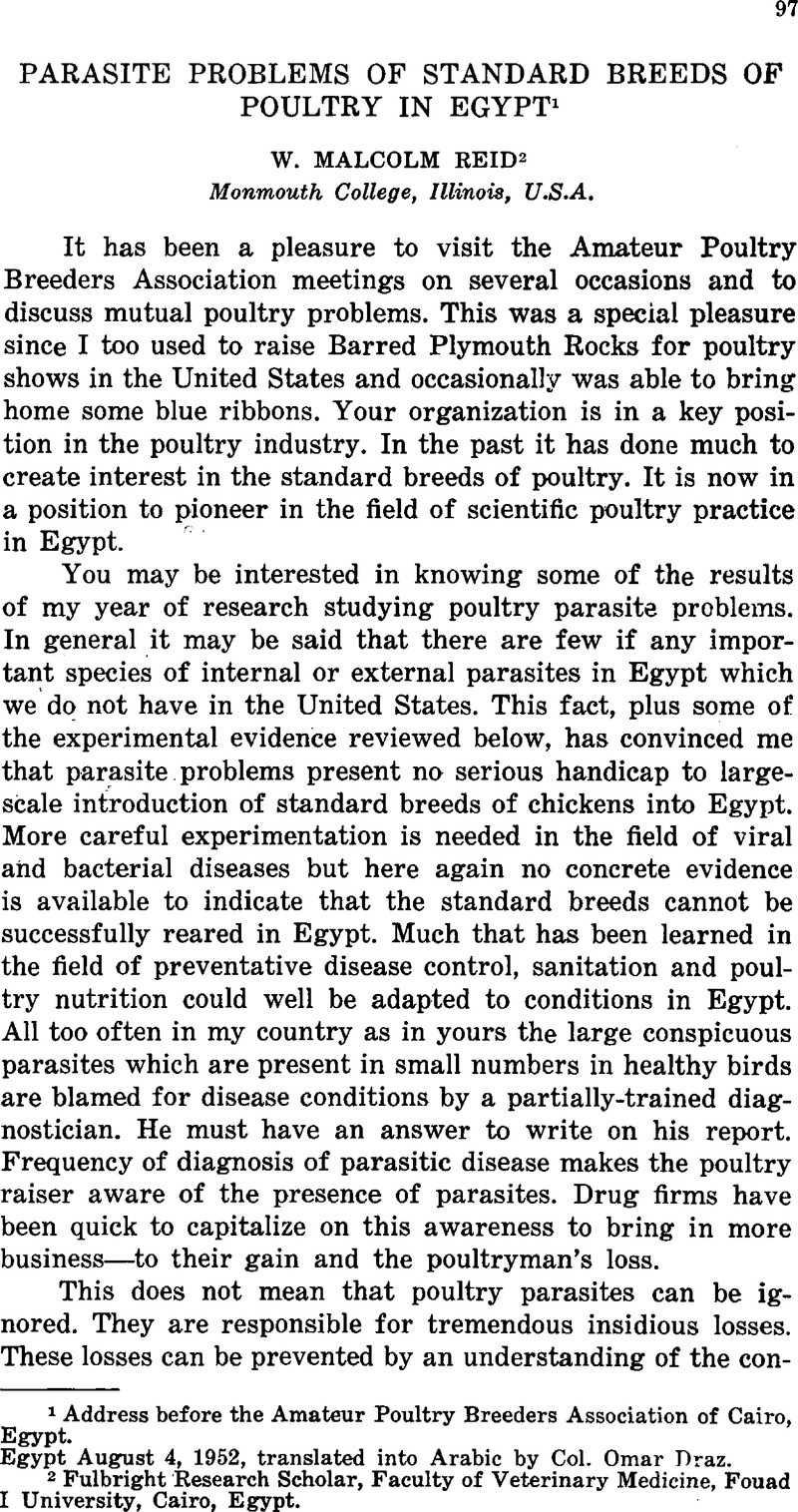Crossref Citations
This article has been cited by the following publications. This list is generated based on data provided by Crossref.
Reid, W. Malcolm
1955.
Comparative Resistance of Imported Standard Breeds and Native Egyptian Strains of Poultry to Ascaridia galli.
Poultry Science,
Vol. 34,
Issue. 1,
p.
30.
Reid, W. Malcolm
1959.
The Poultry Parasite and Disease Problems of Egypt.
World's Poultry Science Journal,
Vol. 15,
Issue. 3,
p.
228.



